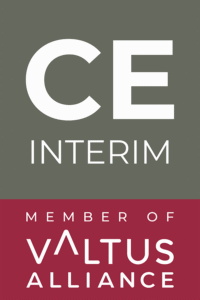Nie masz czasu na przeczytanie całego artykułu? Posłuchaj podsumowania w 2 minuty.
Kiedy producenci i inwestorzy przemysłowi analizują Europę pod kątem kolejnego ruchu, jeden wskaźnik po cichu zmienia mapę: koszt pracy na godzinę.
Bułgaria prowadzi w tym zestawieniu.
Na pierwszy rzut oka łatwo jest założyć, że “niski koszt” oznacza “niskie możliwości”. Jednak w przypadku Bułgarii historia ta ma głębszy wymiar. Z najniższymi kosztami pracy w UE i rosnącymi osiągnięciami w sektorach technicznych, kraj ten oferuje strategiczną przewagę, która wykracza daleko poza koszty wynagrodzeń.
Przeanalizujmy dane i zobaczmy, dlaczego operatorzy fabryk, dyrektorzy finansowi i zespoły private equity zwracają na nie większą uwagę.
Liczby kryjące się za przewagą
1. Porównanie płac godzinowych w UE
Według Eurostat, średnia koszt pracy na godzinę w Bułgarii w 2024 r. wyniesie około 10,6 euro - mniej niż jedna trzecia średniej UE (33,5 euro). Porównajmy to z Niemcami (41 euro), Holandią (39 euro) lub Austrią (38 euro), a różnica w kosztach staje się trudna do zignorowania.
Nawet kraje sąsiadujące z Europą Środkowo-Wschodnią, takie jak Rumunia (11,6 euro), Węgry (12,8 euro) i Polska (14,2 euro) odnotowały wzrost płac.
Krótko mówiąc: Bułgaria nie jest już tylko tania w porównaniu z Europą Zachodnią. Jest tania w porównaniu z własnym regionem.
2. Stosunek kosztów ponoszonych przez pracodawcę do ponoszonych kosztów
Kolejna zaleta: Bułgarskie składki na ubezpieczenie społeczne pozostają umiarkowane i przewidywalne. Dla większości pracodawców, całkowity stosunek kosztów do wynagrodzenia netto jest możliwy do opanowania, z mniejszą liczbą niespodziewanych wydatków niż w krajach o wysokich podatkach.
Ta przewidywalność ma znaczenie - Zwłaszcza w przypadku projektów przemysłowych z dużą liczbą pracowników i napiętymi harmonogramami wdrożenia.
Co to oznacza dla producentów
1. Wpływ na marżę operacyjną
W pracochłonnej produkcji koszt godziny nie jest tylko pozycją w budżecie - definiuje potencjał marży.
Jeśli prowadzisz zakład, który pracuje na trzy zmiany, sześć dni w tygodniu, oszczędność ponad 20 euro na godzinę na pracownika szybko się zwiększa w miliony w rocznej przewadze kosztowej. Ten bufor marży tworzy przestrzeń do reinwestycji w automatyzację, poprawę jakości lub konkurencyjność cenową.
2. Gdzie najbardziej się opłaca
Przewaga Bułgarii w zakresie kosztów pracy jest szczególnie silna w:
- Tworzywa sztuczne i formowanie wtryskowe
- Montaż elektroniki
- Tekstylia i odzież
- Części samochodowe
W tych sektorach, gdzie marże są niewielkie, a skala jest niezbędna, bułgarska ekonomia pracy może zmienić uzasadnienie biznesowe z “możliwego” na “opłacalne”.”
Nie myl niskich kosztów z niskimi umiejętnościami
1. Edukacja inżynieryjna i techniczna
Bułgaria nie konkuruje wyłącznie kosztami. Kraj ten ma silną bazę edukacji inżynierskiej i wysoki wskaźnik absolwentów STEM. Wielu pracowników technicznych posługuje się wieloma językami - Angielski, niemiecki i rosyjski są powszechne wśród pracowników przemysłowych.
Co to oznacza w praktyce?
Firmom łatwiej jest szkolenie i promowanie lokalnych kierowników i inżynierów ds. jakości, unikając konieczności przenoszenia całych zespołów.
2. Opis przypadku
Weźmy elektronikę: Kilku globalnych dostawców produkuje obecnie czujniki, jednostki sterujące i wiązki kablowe w Bułgarii - Nie tylko ze względu na koszty, ale także dlatego, że lokalne zespoły mogą sprostać zachodnim oczekiwaniom jakościowym.
To właśnie ten wysoki stosunek umiejętności do kosztów odróżnia Bułgarię od innych krajów oferujących “tanią siłę roboczą”.
Co się zmienia - wzrost płac i podaż pracy
1. Jak szybko rosną płace?
Płace w Bułgarii rosną i nie jest to nic złego.
W 2023 r. średnie miesięczne wynagrodzenie brutto wzrosło o prawie 14 procent, a do 2025 r. spodziewane są dalsze wzrosty. Jednak w przeciwieństwie do Europy Zachodniej, wzrost płac w Bułgarii nadal przewyższa wzrost produktywności w wielu sektorach.
Dla pracodawców kluczem jest zablokowanie długoterminowej wydajności teraz, gdy różnica pozostaje duża.
2. Czy przewaga jest trwała?
Tak, ale nie na zawsze.
Niedobór talentów jest realny. Emigracja trwa, a populacja Bułgarii starzeje się. Mimo to baza przemysłowa rośnie, a firmy z silnym wdrożeniem, lokalnymi powiązaniami i jasnymi planami realizacji nadal przyciągać i zatrzymywać wykwalifikowanych pracowników.
Inteligentne strategie zapewniające długoterminową przewagę
1. Produktywność ponad czystym cięciem kosztów
Niskie koszty pracy stanowią punkt wejścia, ale Trwała przewaga wynika z poprawy wydajności na godzinę.
Firmy, które łączą bułgarską bazę kosztową z systemy lean, automatyzacja na miejscu i szkolenia przekrojowe cieszyć się efektem mnożnikowym.
2. Regionalne taktyki zatrudniania
Mądrzy inwestorzy podążają również w kierunku lokalnych strategii dotyczących siły roboczej:
- Współpraca z uniwersytetami technicznymi w Sofii, Płowdiwie lub Warnie
- Tworzenie programów praktyk zawodowych powiązanych z potrzebami zakładu
- Zatrudnianie dwujęzycznych menedżerów HR, którzy potrafią połączyć oczekiwania zachodniej centrali z oczekiwaniami lokalnymi.
Dlaczego wykonanie tymczasowe ma znaczenie
Sama przewaga w zakresie kosztów pracy nie zapewnia wyników.
Nadal trzeba skonfigurować zespoły, dostosować zgodność i uruchomić produkcję - szybko i bez tarć. To właśnie tutaj partnerzy wykonawczy robią różnicę.
Przy CE Interim, Często jesteśmy angażowani do wdrażania tymczasowych dyrektorów zakładów, kierowników ds. rozwoju i liderów integracji HR, którzy wiedzą, jak Przełożenie strategii pracy na działania operacyjne - zwłaszcza przy wchodzeniu na nowe rynki, takie jak Bułgaria.
Myśl końcowa: Koszty pracy to dopiero początek
Praca jest tylko jedną z części bazy kosztowej, ale jest najbardziej widoczna, najbardziej wrażliwa na nagłówki i często najbardziej obciążona emocjonalnie.
Obecne prowadzenie Bułgarii daje ci okno. Szansa na zbudowanie stabilności operacyjnej, zanim płace dogonią resztę Europy.
Ale przewaga ma znaczenie tylko wtedy, gdy działasz wcześnie i dobrze wykonujesz.
Szukasz Bułgarii do budowy lub rozbudowy zakładu?
Zacznij od kosztów pracy, ale upewnij się, że kończysz z odpowiednim zespołem na miejscu.





